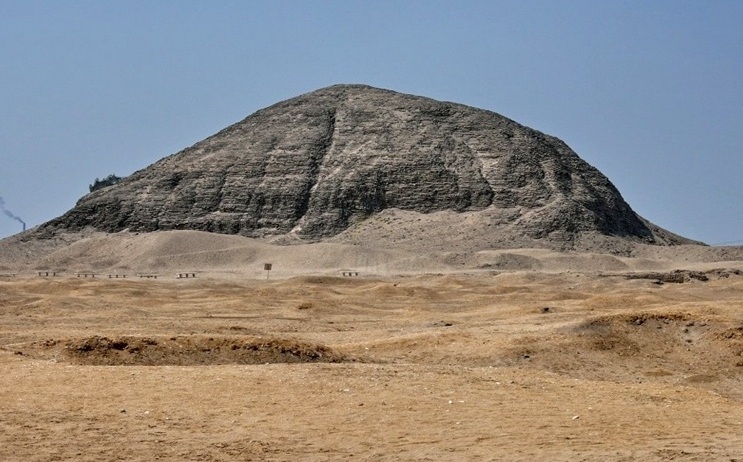The Pyramid of Hawara was constructed in the village of Hawara, just 9 km to the East of El Fayoum city, by king Amenmehat III, the sixth Pharaoh of the 12th dynasty of the Old Kingdom of ancient Egypt around 1850 BC.
The Pyramid was built out of mud-brick and coated by limestone, with height of 58 meters and a length of 100 meters at each side.
The Pyramid of Hawara is different from the previous pyramids constructed before it, as Amenemhet III made the entrance of his Pyramid in the south side instead of the north side, which was used in the previous buildings, in order not to be easily founded by thieves, who would spend a long time searching for the entrance in the usual side of the Pyramid.
The entrance to the pyramid of Hawara was designed in the western section of the pyramid and it leads to the first room of the pyramid. Afterwards, one finds himself in a passageway that leads to nothing at the very end, as Amenmehat III constructed a long ladder sliding to a room that appears as if it is the burial chamber, while the burial chamber was entered through a narrow passageway located on the ground. This passageway was blocked by a large stone that weighs more than 45 tons.
The burial chamber was carved first of the rocks in a rectangular shape with a single block of stone inside it, then it was emptied very carefully until it became the burial chamber with four thick walls.
The village of Hawara is located 9 kilometers southeast of El Fayoum city, it was called Hat Wa'art, which means the footsteps, and it is considered one of the wonderful destinations in Egypt.
Some archeologists were able to unearth some of the most wonderful portraits in Hawara, which are famous now for being called "the Portraits of the Fayoum". These are 146 portraits of different people drawn with paint and they date to the period from the 1st to the 3rd centuries AD.

